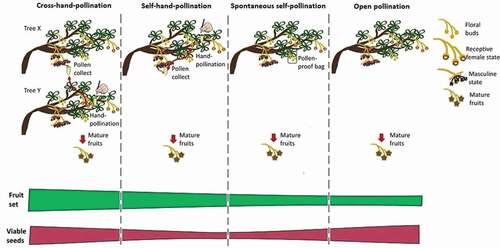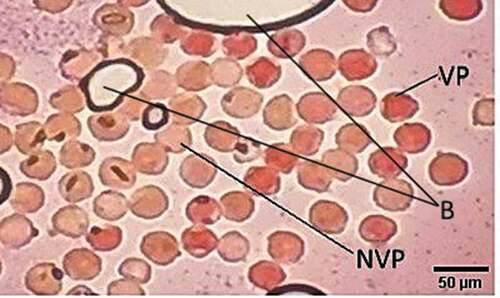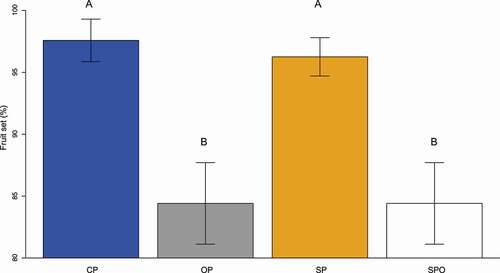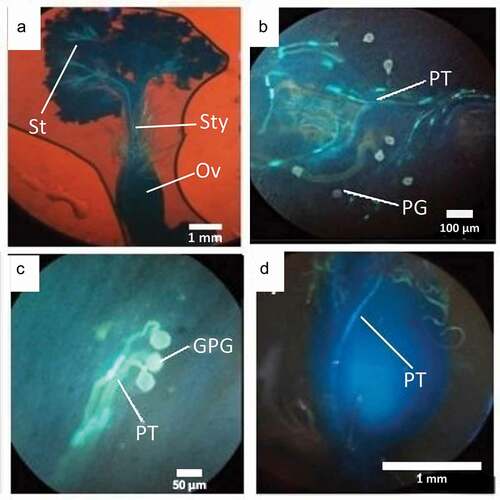Figures & data

Figure 1. (a) Viable seeds with endosperm present and viable embryo), (b) Seed with endosperm present and aborted embryo, (c) Seed without endosperm and nonviable embryo, and (d) Seed without endosperm and aborted embryo

Figure 2. Viable (VP) and non-viable (NVP) pollen grains of Polylepis incarum stained with tetrazolium, and the presence of bubbles (B)

Figure 3. Percentage of fruit set following cross-hand-pollination (CP), open pollination (OP) self-hand-pollination (SP) and spontaneous self-pollination (SPO) of Polylepis incarum. Different letters indicate significant differences (P < 0.01)

Table 1. Percentage of viable seeds (Mean ± SD) produced by cross-hand-pollinated, open-pollinated, self-pollinated, and spontaneous self-pollinated flowers produced by Polylepis incarum in western Bolivia
Figure 4. Percentage of viable and non-viable seeds following cross-hand-pollination (CP), open pollination (OP), self-hand-pollination (SP) and spontaneous self-pollination (SSP) of Polylepis incarum. Asterisks indicate significant differences among treatments at P < 0.01



